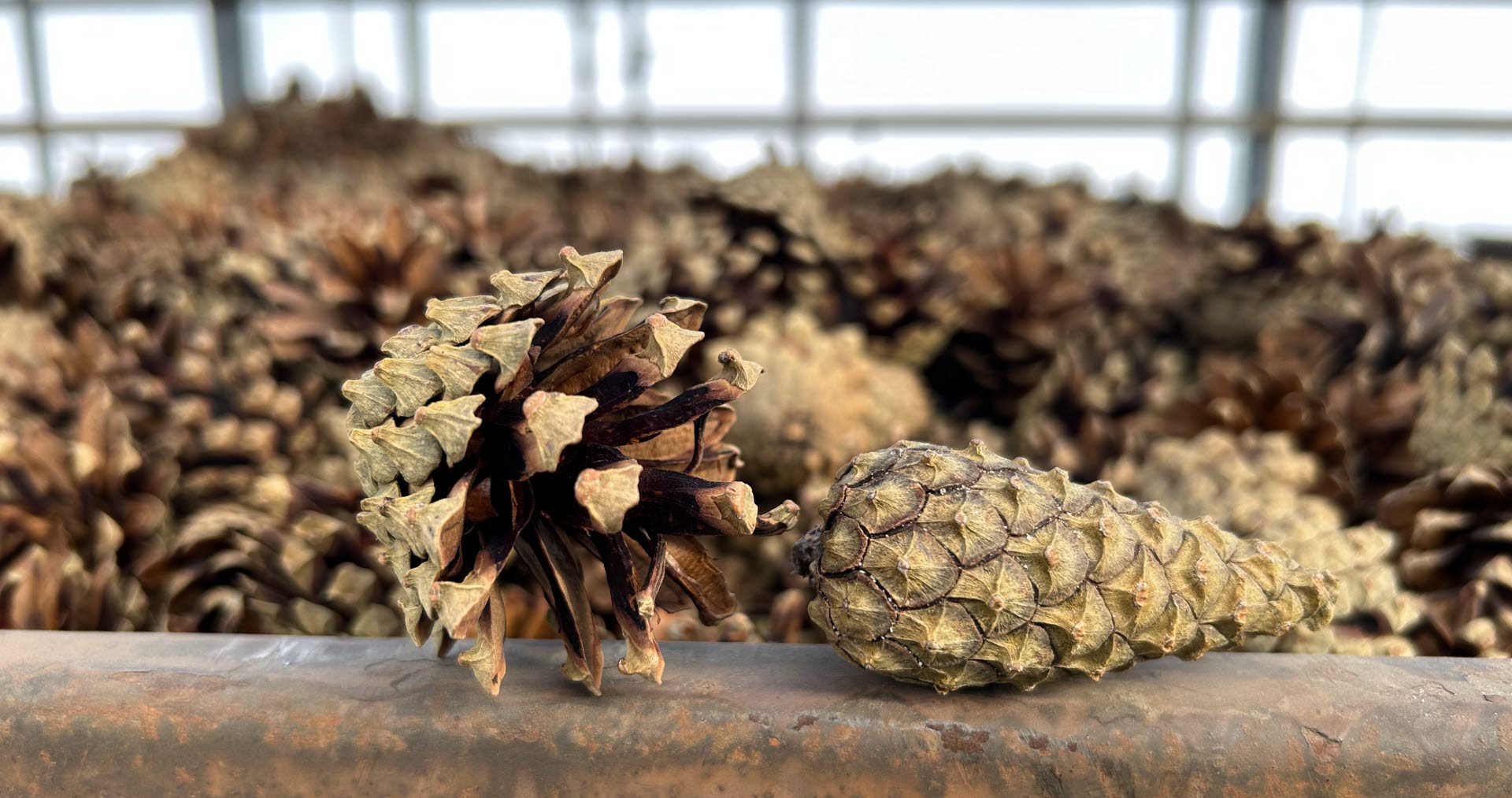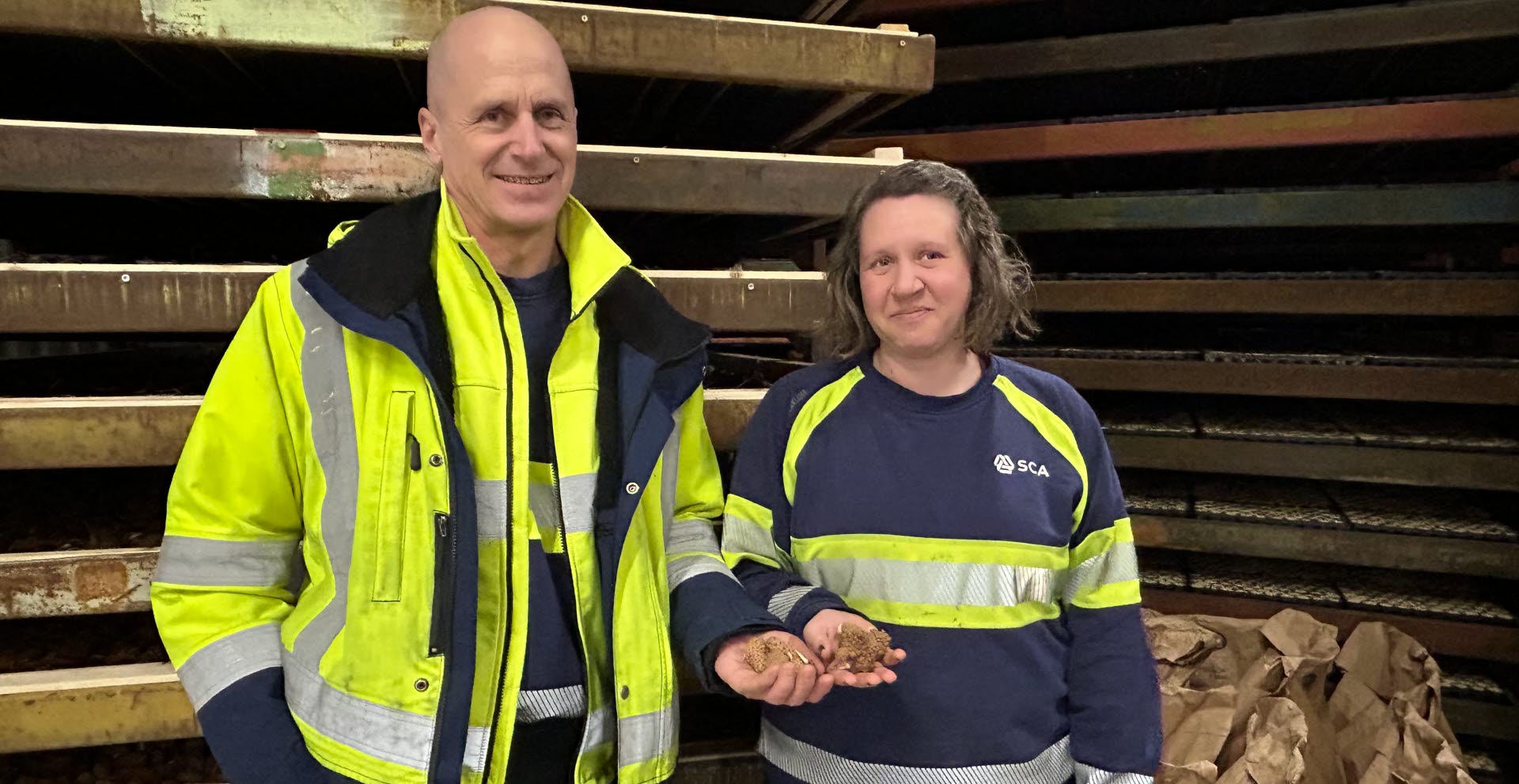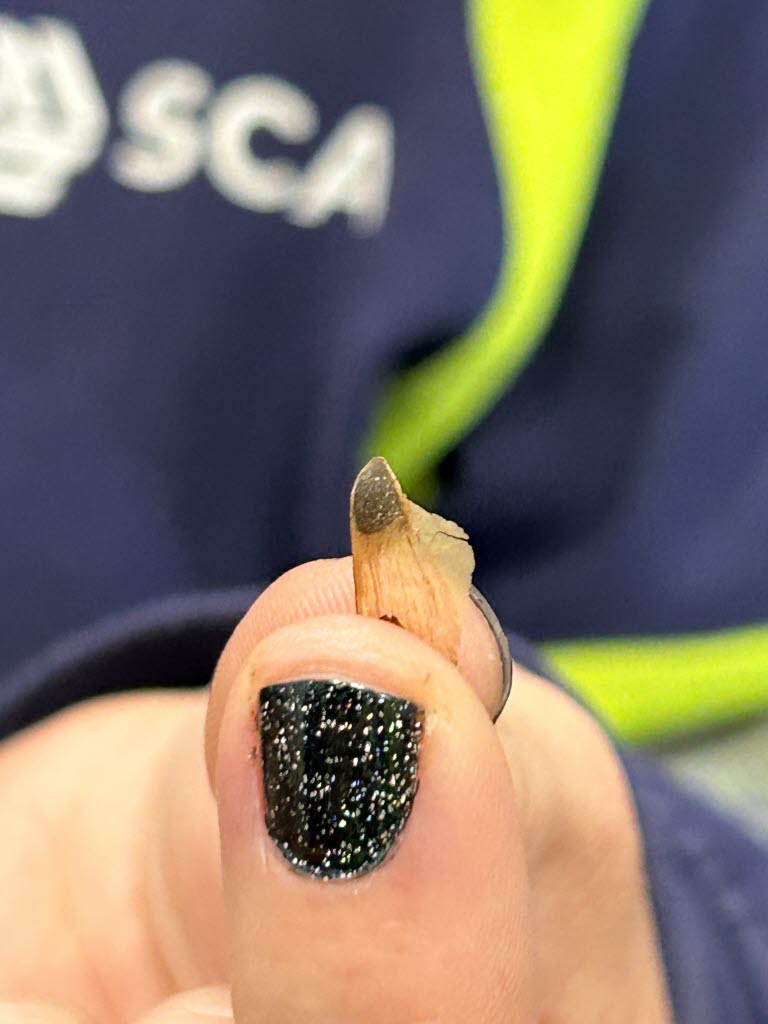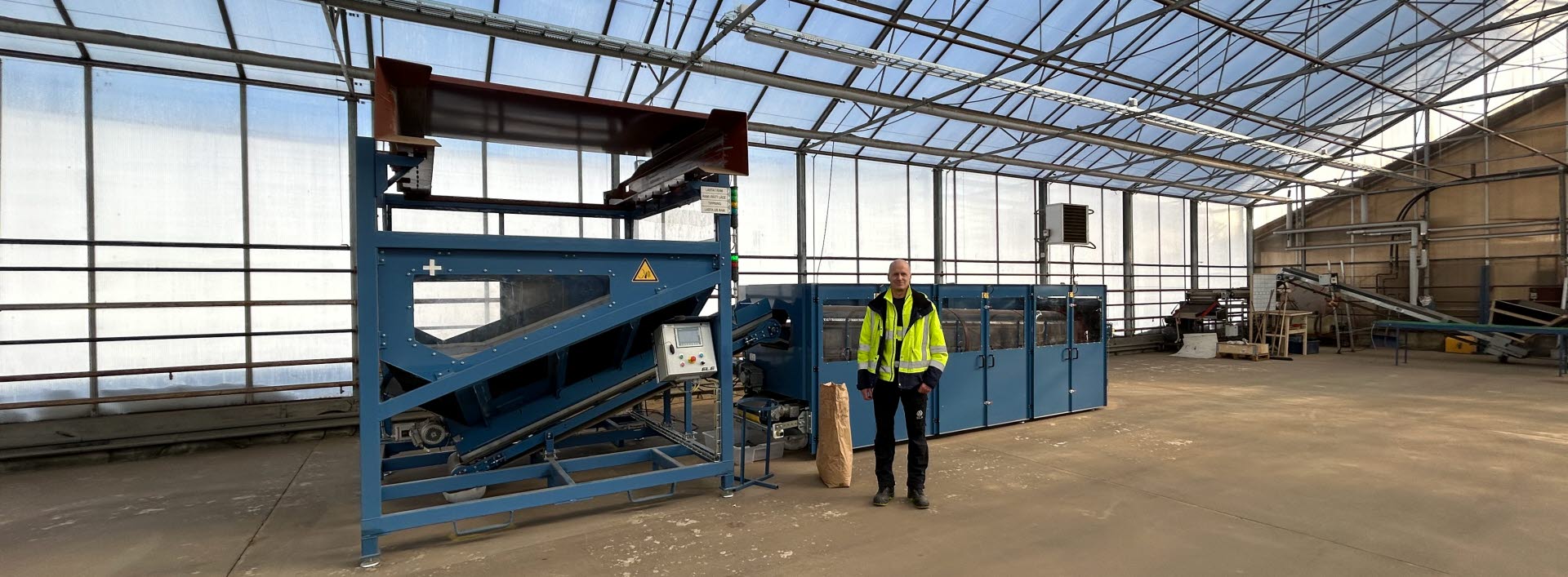
SCA invests in seed extraction
- News
- Forest
- För skogsägare
SCA’s Wifstamon nursery had its seed extraction premier this past winter. Using an in-house developed kiln and seed separator, SCA can now process cones to obtain seeds from its own pine seed plantations.
In the seed extraction process, the cones open up and release their seeds. It may sound simple, but it requires a quality-assured work method so as not to damage the valuable seeds. For many years, SCA has hired a contractor for its cone kilning, but as of this year, the company can process a large share of the cones itself.
“It's good to be able to do some of the extraction in-house,” says Marlene Lagergren, who was the project manager for the project.
“In addition, we create employment over the winter in our otherwise very seasonal business. And we enhance our skills,” adds Anders Tolblad, Manager at NorrPlant.

Own design
It has taken a lot of problem-solving and some inspiration from others to develop both a kiln for drying and a machine that separates the seeds from the cones.
“These are not machines that can be bought, we have designed them ourselves. Then we hired a company to put build and assemble them,” explains Marlene.
The cones come from the pine and contorta pine seed plots that SCA has around the Sundsvall area. The cones were harvested last autumn and have matured on large racks in a greenhouse and were then stored in cold storage until kilning began in January.
“We only process pine cones because spruce cones require a different method,” says Marlene.

Kiln and seed separator
From the cold store, the cones are moved to one of Wifstamon’s greenhouses. It is home to tens of thousands of small seedlings during the spring and summer months, but now these are replaced by a large container and a blue machine with a large hopper and net-clad drum a couple of meters long.
“The container is our hot air kiln where the cones are dried for about 24 hours to open them up. The second part is the seed separator, a kind of giant tombola drum, where the open cones are shaken around so that the seeds extracts and fall down through the net and can be collected in a plastic bin,” says Marlene.
The cones that leave the separator are collected on their rack. They are then watered so that they close again, before going back into the kiln for a second round of drying, and then another round in the separator. Each pine cone has to be processed twice to extraxt all the seeds.
“There are usually around two kilograms of seeds”, says Marlene.
To gauge its success with the seed extraction, SCA has sent a couple of test batches of seeds to Skogforsk (Forestry Research Institute of Sweden). After kilning, the seeds retain their bracts, but at Skogforsk’s seed service in Sävar, the bracts are removed and germination is tested.
“Having the right germination rate is hugely important for seedling survival and growth. Since all the results from the analyses looked good, we were able to proceed with kilning,” says Anders.
All seeds are then transported in paper sacks to Skogforsk’s seed service. They handle all seeds from SCA, and from some others in the industry. Skogforsk offers a range of services such as removing seed bracts, cleaning and sorting seeds, as well as analysis, advice and development of new seed treatment methods.

Follow the seeds
When the seeds come back to NorrPlant after a couple of months, they are bractless, sorted and ready for sowing.
“We sow most of the seeds in the current year, but we can also store seeds in the freezer for future seasons,” says Marlene.
Thanks to SCA’s extensive seedling monitoring, which follows the development of selected seedling up to the age of ten years, it will be possible to monitor these seeds from the first in-house kilned batch.
“This is very good, because we want to see that the seeds can produce high-quality seedlings and stable trees that grow well,” concludes Anders.